News Briefs – Wings Fall-Winter 2024
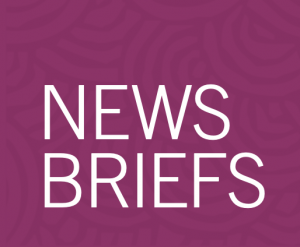
HU gives Seattleites insiders tour of the Yakima Valley
While the Yakima Valley is only a few hours east of Seattle, its rural geography, high-desert climate and agricultural dependence can make it seem as foreign as a visit to another land. In September, supporters from the greater Puget Sound region made their way east of the Cascades for an insider’s tour of Yakima, its arts and culture, agricultural industry, and Heritage University.
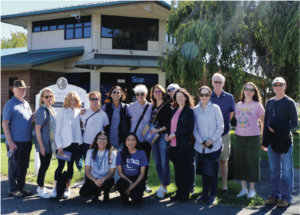
Visitors from western Washington outside the Student Services Center at Heritage University with two HU student ambassadors.
Fourteen visitors toured a private Native American museum, an apple packing warehouse, and the artist community Mighty Tieton. They watched artisans working on one of their mosaic projects and met with Heritage alumna Rosie Saldana, the organization’s artistic director. The guests dined at the private homes of Heritage supporters and former board members, where they sampled wines and beers from the region and learned about its history.
“The Yakima Valley is a rich and diverse community with wonderful people from all different walks of life,” said Elizabeth Perera, regional development director for western Washington. “Most people passing through the region, or even stopping to visit for a long weekend, only get to appreciate what it offers.
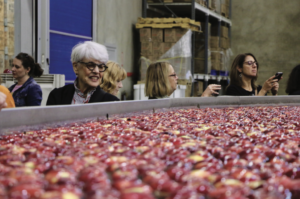
HU Board Member Ellen Wallach looks over an apple processing machine during a visit to Washington Fruit in Yakima, Wash.
“The tour gave our visitors a much more in-depth perspective on the region and the people who call this place home. They better understood Heritage’s life-changing role in our students’ lives and the community itself.”
This is the fourth year of the tour, which serves as a fundraiser for the university. This year, the event raised $20,000 in student scholarships.
The year-over-year response has been so positive that work is underway to build next year’s event. It will take place one weekend mid-September. For more information or to reserve your space for the 2025 tour, contact Elizabeth Perera at Perera_E@heritage.edu. ![]()
Largest class in seven years starts at Heritage this fall
Heritage University welcomed its largest group of new students since 2017. A total of 347 new freshmen and transfer students started their educational

Students walking a path between Petrie Hall and the Kathleen Ross Center at Heritage University.
journey at the university this fall. This achievement came despite the challenges faced by students and families this year in securing college funding in a timely manner. The federal government’s troubled revamp of the Free Application for Federal Student Aid (FAFSA) left many students nationwide unsure how much, if any, financial aid they would receive to help pay for their schooling until only a few months before classes began. Heritage’s Office of Financial Aid doubled its efforts to get financial aid packages to incoming and returning students as soon as their FAFSA applications were processed. Additionally, university donors stepped in to fill any financial gaps, ensuring that no student was left behind due to financial constraints. ![]()
Seattle University School of Law expands access to legal education at Heritage
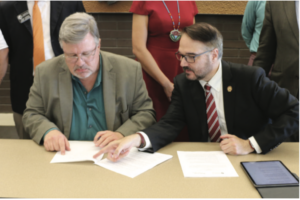
HU President Andrew Sund and Seattle University School of Law Dean Anthony Varona sign papers establishing a law school partnership between the two higher learning institutions.
In September, Heritage and Seattle University entered a partnership to help aspiring lawyers earn a degree while staying in the Yakima Valley. Called the Hybrid Hub, the partnership opens up Heritage’s campus to Seattle University law students who are attending classes remotely through their Flex JD program, giving them access to an academic setting for studying as well as to other campus resources, such as high-speed internet and the library. Additionally, Heritage will serve as an in-person meeting area where the students can network with their peers in the program as well as Seattle University Law School alumni, and members of the local legal community.
The Seattle University Flex JD program allows students to attend law school part-time in a hybrid online setting. ![]()
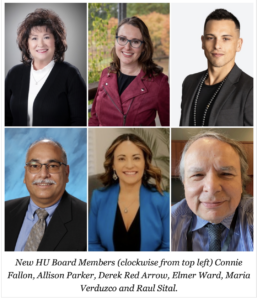
New board members bring wealth of leadership and career skills to Heritage
Six new members joined the Heritage Board of Directors this year. They are leaders in their respective fields and join 24 other directors who volunteer their time and resources to ensure the university’s success.
CONNIE FALON, CEO of Compass Financial Network LLC, has more than 30 years of experience in financial planning. She is a Chartered Retirement Plans Specialist who manages wealth for individuals, families and businesses. Her expertise includes broad-based investment planning and portfolio management. Falon is a long-time friend of Heritage, having volunteered for many projects over the past 20 years.
ALLISON PARKER, Principal, Peake Impact, joined the board in January. She is a seasoned social impact strategist with nearly 25 years of experience, focusing on channeling flexible, long-term capital to under-resourced communities. She advises individuals and foundations in strategy, impact investing, and complex asset gifts. Prior to founding Peake Impact, she spent more than 16 years at the Seattle Foundation, where she most recently served as Managing Director of Philanthropy Strategies, leading a team responsible for creating new funds and launching a donor-advised impact investing program. Her career began as a staffer to U.S. Senator Patty Murray, specializing in federal funding, where she first encountered Heritage University.
DEREK RED ARROW, Litigation of Counsel, Kilpatrick Townsend & Stockton, is an enrolled member of the Nez Perce Tribe. He advises tribal governments, enterprises, nonprofits and businesses on matters involving treaty rights, land-back projects, inter-tribal trade, taxation, and other aspects of Federal Indian Law. Prior to joining his current firm, he co-founded the American Indian Law practice group at a Yakima-based firm, served as a staff attorney for the Yakama Nation, and clerked for Chief Judge Brian M. Morris of the U.S. District Court for Montana. He has been recognized as one of “America’s Best Lawyers: Ones to Watch” in Native American Law, he has received the NCAIED National 40 Under 40 award for his leadership and contributions to Indian Country and was named a “Successful Indigenous Role Model” for Nez Perce Tribe’s Lapwai School District.
RAUL SITAL, Assistant Superintendent of Operations and Supports, Pasco School District, has been in his current position for three years. His leadership in this capacity contributed to the effective functioning of the district’s operations and support systems. While at Pasco School District, Sital served as a teacher at McLoughlin Middle School, a program teacher and manager at Discovery Middle School, and as Principal of New Horizons High School and Pasco High School.
He earned his teaching credential at Central Washington University and holds a Master’s in Teaching and Learning degree from Heritage University. He is passionate about education because he believes in providing the opportunity for every child to reach their dreams and goals.
DR. MARIA VERDUZCO, Clinical Medical Director, Yakima Valley Farm Workers Clinic, was born and raised in Yakima. She earned a B.A. in Biology with a minor in Chemistry from Central Washington University in Ellensburg and went on to obtain her Doctor of Medicine degree from the University of Washington School of Medicine. Verduzco completed her residency at the Central Washington Family Medicine Residency program in Yakima. She is bilingual in Spanish and English and has dedicated her career to enhancing patient health, especially withinunderserved communities.
ELMER WARD, Associate Judge, Yakama Nation Court, has worked in Native law for his entire legal career in a variety of roles for several tribes. He received a Bachelor of Arts degree from Harvard University and a Juris Doctorate from the UCLA School of Law. He has served as a board member for People for People, the Yakima Valley College Boardof Trustees and the Providence Foundation Board. ![]()

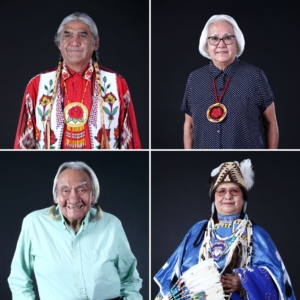
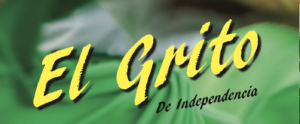
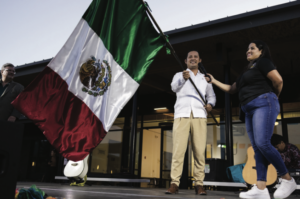
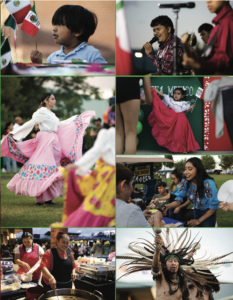
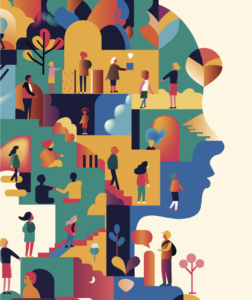

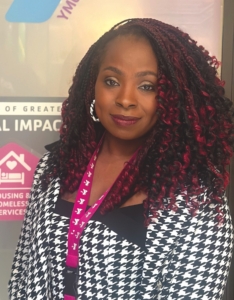
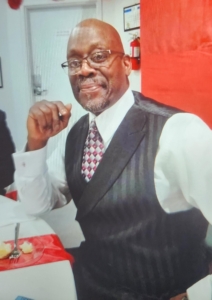



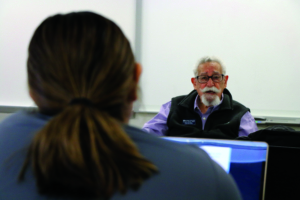
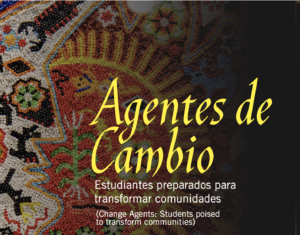

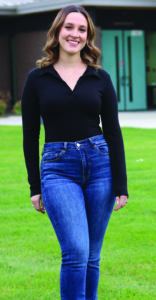
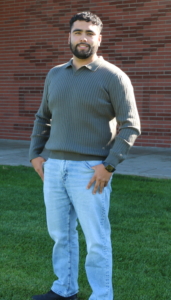
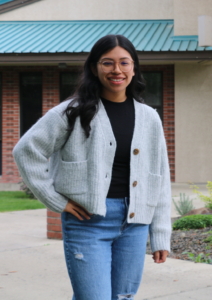

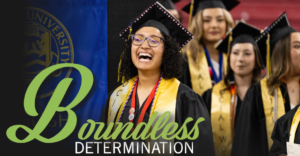

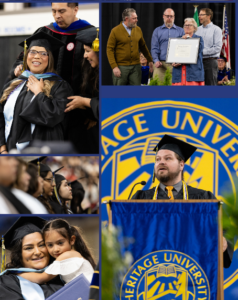
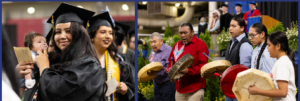
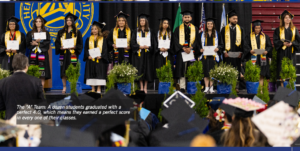
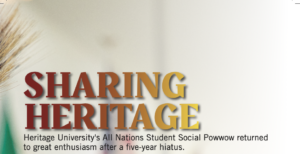
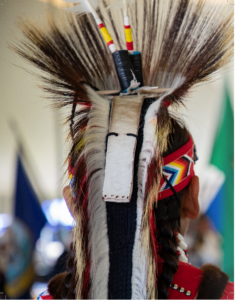
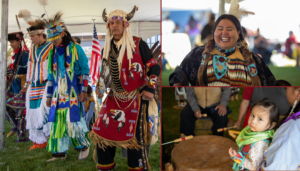
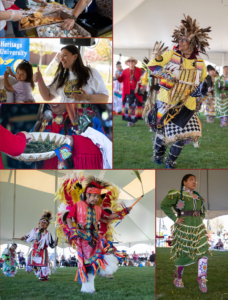
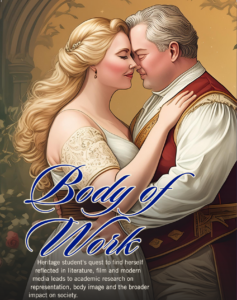
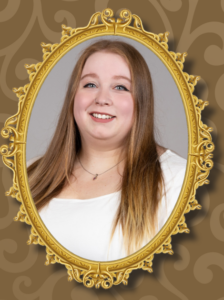


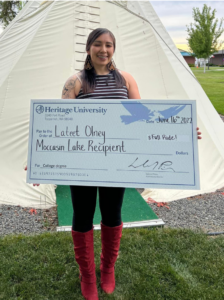

 As she learns more about her people’s traditions and beliefs, whether at a powwow or during her day at Heritage, she feels a sense of awe.
As she learns more about her people’s traditions and beliefs, whether at a powwow or during her day at Heritage, she feels a sense of awe.